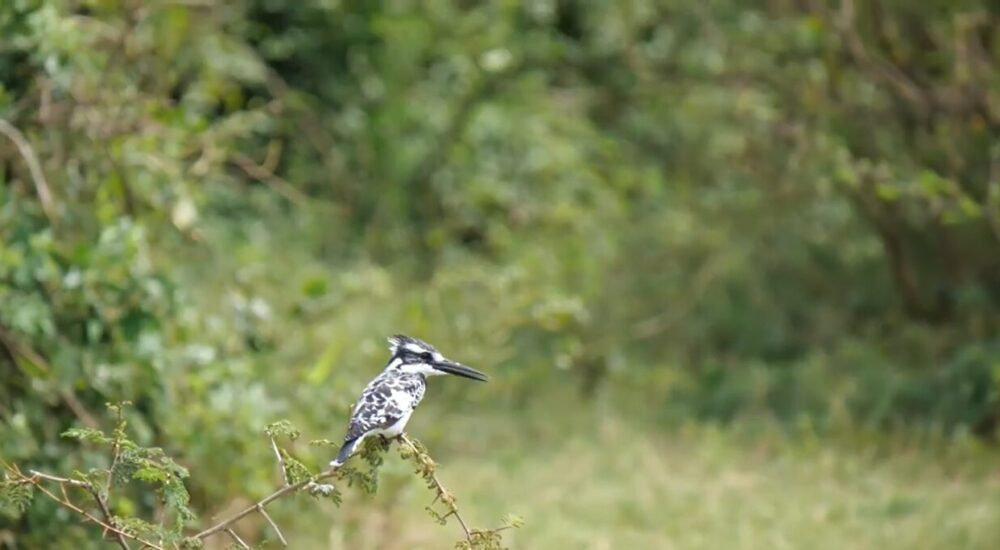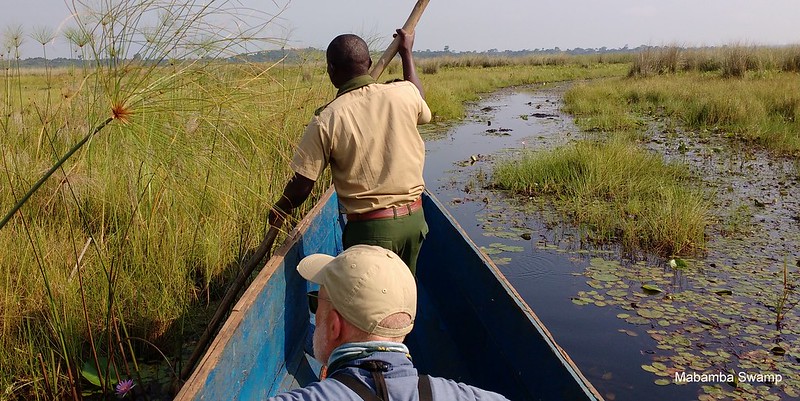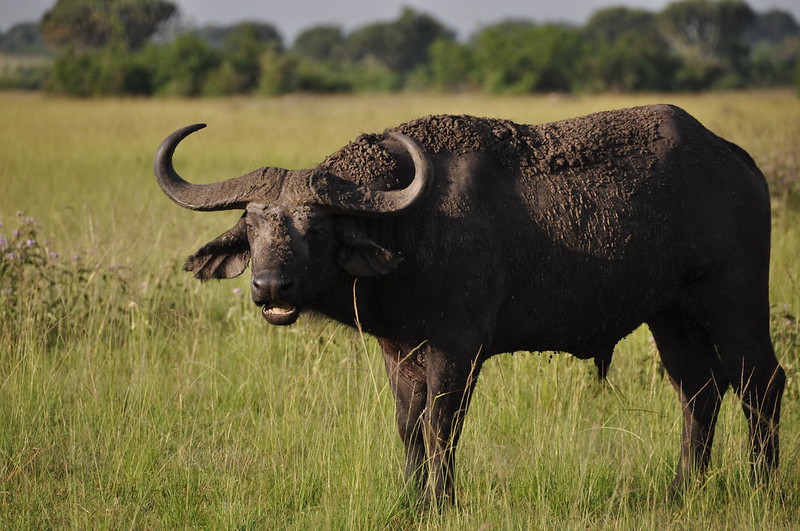Discover the wonders of Uganda’s bird watching opportunities. With over 1,070 bird species, Uganda is…
The Shoebill Stork
The Shoebill Stork, The Shoebill is a big wading bird that lives in the marshes of Uganda in tropical East Africa. It is also known as the Whale-head, the Shoe-billed Stork, or even the Balaeniceps rex. It sneaks along the swampy shores of the Nile River and Lake Victoria, grabbing food with its unique, easy-to-recognize bills. The shoebill is one of the five birds in Africa that birdwatchers want to see the most. Some places in South Sudan, Kenya, the Central African Republic, northern Cameroon, southwestern Ethiopia, Malawi, Botswana, and the Congo River are also good places to see this beautiful bird.
Because it is so rare, this bird is known as one of the most sought-after in Africa. Seeing it on your Uganda tour will be great. You can’t mix up the shoebill with any other bird. A bluish-gray bird that is 4 to 5 feet tall and has wings that are 8 to 10 feet long. Their bill, which takes up most of their face, looks like a big Dutch wooden shoe.
How the Shoebill Stork is Put into Groups
The Egyptians and Arabs knew about the shoebill, but it wasn’t put into a category until the 1800s, when skins and then live examples were brought to Europe. John Gould, an English bird scientist, gave it the name Balaeniceps rex in 1850. On the other hand, “whale-head” comes from the Latin words balaena, which means “whale,” and caput, which means “head.” In compound words, -ceps stands for “whale-head.”
Taxonomists have recently brought up the issue of whether or not this beautiful bird should be kept with storks (Ciconiiformes). They finally decided that the strange bird is a Pelecaniformes after looking at it through telescopes for hours on end. It’s related to pelicans, then. Animals that eat meat are called carnivores, and the shoebill bird is one of them.
The shoebill has many interesting names, such as the boat-bill, the bog-bird, the smaller lechwe-eater (because it is said to like eating lechwe, an aquatic antelope), and Abu markub, which in Arabic means “father of a slipper.”
Fact Sheet on the Shoebill Stork
When it flies, the shoe bill stork’s legs stick straight out past its tail, and its neck pulls back.
Mouth: The shoebill stork’s mouth is shaped like a shoe, which is how it got its name. It also has a sharp, bent beak that lets it tear mammals into pieces that are easy for it to swallow.
Weight: A female shoebill stork that is fully grown weighs about 4.9 kilograms, while a male shoebill weighs about 5.6 kilograms.
Length: When standing on its legs, the shoebill stork is between 110 and 140 cm tall. Its foot is long and can extend up to 18 cm, which lets it stand on plants in water.
The shoebill stork has a tail that is 100–140 cm long and wings that are 230–260 cm wide. Some people call the shoebill stork a “statue bird” because it often stands still in one place for long amounts of time.
Distance flown: Shoebills fly slowly because they flap their wings about 150 times per minute and because that’s just how they are. Their range is 100 to 500 meters.
Lifespan: The shoebill stork is a loner bird that can live up to 50 years or more in captivity and 35 years in the wild.
Having babies: Male and female shoebill storks build 1-1.7-meter-wide nests out of water plants on floating platforms during the mating season, which lasts from April to June. The female shoebill builds nests, and the female usually lays one to three 164-gram eggs. During the 30 days that the eggs are being laid, both parents help watch over the nest and feed the babies. The young shoebill stork gets flight feathers after about 105 days and can fly well.
Shoebill storks live in swamps or lakes and eat a wide range of animals, such as frogs, water snakes, baby crocodiles, turtles, rodents, monitor lizards, turtles, snails, small birds, lungfish, and catfish. Shoebill storks eat in muddy water and hunt by seeing their prey clearly. They strike as soon as they see it or wait calmly for an opportunity to attack.
Population in Uganda: There are less than 1,000 shoebill storks left in Uganda, so the population is thought to be in danger. The shoebill stork’s population growth is limited by a number of things, such as fishermen who kill them because they think they bring bad luck, habitat loss as swamps are turned into farmland and grazing areas for cattle, pollution, and climate change, among other things.
Facts about behavior
The busiest time for shoebill stocks is at night. Even though they live in water most of the time, they don’t have webbed feet so they can still sneak up on their prey in the water. Most of the time, they stay alone and can be very watchful of their territory. It is known that shoebill storks like living alone. They even hunt separately, and you will only see the male and female together during mating season. After that, they move on their own.
In general, they are quiet birds. They can sneak up on their food and catch it by being quiet and jumping once to grab it with their big beaks that look like shoes. Shoebills have been seen talking to each other, though, by mooing, bobbing their heads, clapping their bills, and whining high up. Most of the time, they make these sounds at their homes. In flying, they have long wings and their heads and necks are tucked back.
They look slow on the ground but are graceful in the air. When they want to attack, they pull back their wings and fly straight at their food. Shoebill storks wait a long time before acting. They will swim around in a body of water or any other hiding place until they find their food to eat. They will do this for a whole day if it means they get what they need to eat at night. In fact, they like to eat at night, after the sun goes down.
Shoebill storks usually poop on themselves, and scientists have shown that they do this to cool off from the heat. This is something that all storks do.
Are shoebills bad for people?
With dinosaur-like features and a strong, powerful mouth, shoebill storks are known for having a scary look. But does their behavior match how scary they look? Even though they look scary, shoebills are usually calm and friendly birds that don’t bother people. On the other hand, their strong, wide beaks let them hunt big animals like snakes, lizards, and even big antelopes. These “prehistoric throwback” water birds have never attacked people, so they don’t pose a threat to people. It’s more likely that the opposite is true.
How many Shoebills are still alive?
There aren’t many animals that can eat shoebills, so they are a rare species. The number has dropped a lot because of hunting, and now there are only 5,000 to 10,000 birds left in the wild.
Is there a shoebill stork in the US?
It is not native to the United States and there are no shoebill storks living there in the wild. There are, however, a few that live in parks. The only place in the US where people can see shoebill storks is at Zoo Tampa in Tampa, Florida.
Kenya: Where to see the Shoebill Stork
You can see shoebill storks in many places, like Lugogo swamp in Ziwa Rhino Sanctuary, Mabamba swamp on Lake Victoria, Murchison Falls National Park along the Albert Nile, and on a boat cruise through the Nile delta. You can also see them in Lake Mburo National Park in western Uganda, Toro-Semuliki Wildlife Reserve, Nabajuzi swamp in Masaka, and Makanaga swamp bay in the Ishasha sector in (UWEC).
There are two main types of shoebill adventure tours that happen in Uganda:
Safaris with Shoebills in Mabamba Swamp
Mabamba Swamp is a large swamp that leads to Lake Victoria’s main body through a narrow, long bay lined with papyrus trees. It is an internationally important wetland that is on the Ramsar list. Anyone in Uganda can go to this swamp and see the widely threatened Shoebill up close at any time.
The Mabamba SwampNot only is Mabamba Bay a home for shoebills, it is also a great place to watch birds, with 260 species having been seen there. The spot is also home to 38% of the world’s Blue Swallow population, the Papyrus Yellow Warbler population, the white-winged tern population, and the papyrus gonolek population. All of these bird species are globally threatened.
Spur-winged geese, goliath herons, pygmy geese, African jacanas, several Lesser Jacanas, and pallid harriers are some other birds that birdwatchers like to see in Mabamba Bay. Gull-billed Terns, Whiskered Terns, White-winged Black Terns, and Grey-headed Gulls are some of the migratory birds that visit the spot.
Mabamba Bay Wetlands support profitable fishing and provide fish for nearby towns. They also provide raw materials for local crafts, building materials, water for people and animals, and products that aren’t made from wood.
To get to Mabamba, the best way is to take a boat from Entebbe to the Nakiwogo spot on Lake Victoria. The trip takes an hour. At the Mabamba landing spot, you get on a smaller boat to get through the papyrus swamps and find the shoebill.
The Mabamba shoebill tour lasts for about one to two hours and costs between $90 and $150 per person, which includes the tour guide. Because the spot is close to Entebbe International Airport, this tour works best in the early afternoon or evening, either before or after a Uganda safari that includes everything.
Shoebill Safaris in Murchison Falls National Park
From Murchison Falls to the delta where the Victoria Nile meets Lake Albert, the Murchison Falls-Albert Delta Wetland is there. When Lake Albert and the delta meet, they make a marshy area that is safe for rare shoebills and other important waterbirds like pelicans, darters, and different kinds of herons. The Nile Delta is part of the Victoria Nile. It has 50 branches that run through dense papyrus swamps and into the lake, where tourists take boats to see the amazing shoebill.
The Shoebill StorkFrom the Paraa wharf, tourists can take a three-hour boat ride down to the shoebill. This boat ride brings them close to some of the most amazing wildlife in the park. Elephants, hippos by the thousands, some of Africa’s biggest crocodiles, small groups of buffalo, waterbuck, kob, and, most of the time, giraffes can be seen along the Nile.
The Black-winged Pratincole is a migratory waterbird that usually shows up in April. The Ramsar-listed delta protects a number of bird species that watchers love to see. Other birds that have been seen include the Lappet-faced Vulture, the Lesser Kestrel, and the Denham’s Bustard.
To see the shoebill, take the UWA boat launches, which leave every day at 8:00 a.m. and 14:00 p.m. and cost about $15 per person for groups of at least ten. From Paraa’s south jetty, other companies offer small private trips that give you a lot of freedom for $20 to $150 per person.


